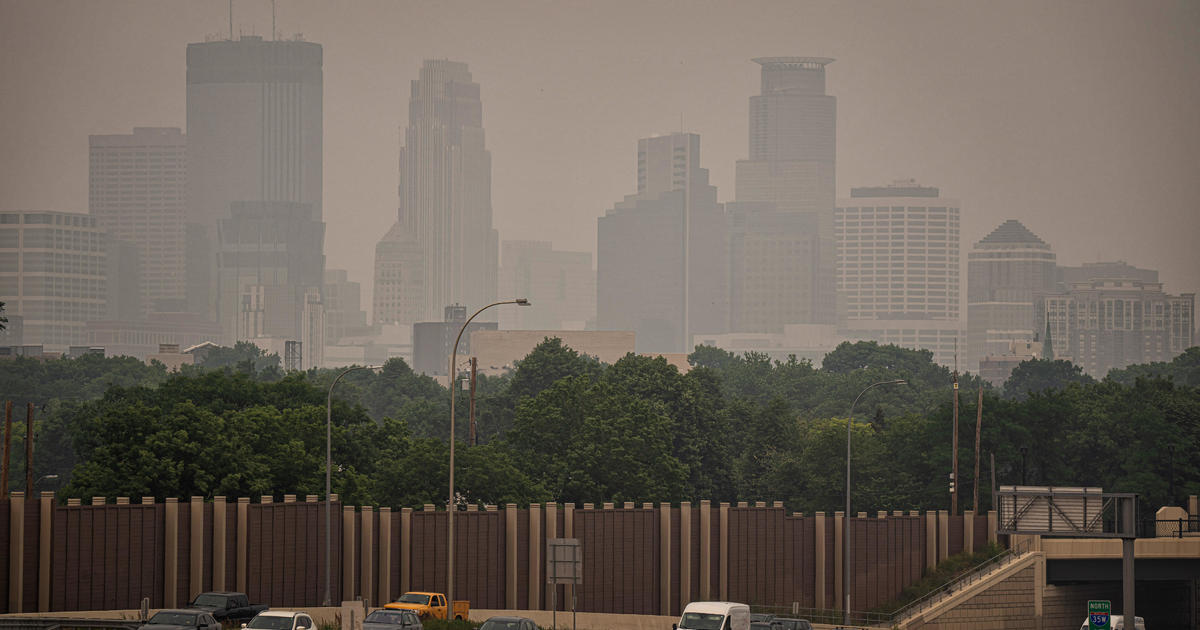Good Question: Where Does Girl Scout Cookie Money Go?
MINNEAPOLIS (WCCO) - This Saturday, the Girl Scouts of Minnesota and Wisconsin River Valleys will start its annual cookie sales fundraiser.
Last year, the 41,000-strong Girl Scouts River Valleys council sold 4.3 million boxes and brought in $17 million.
Each girl sold an average of 146 boxes.
"I can learn how to sell things and operate a small business basically," said Girl Scout Sarah Albert of Brooklyn Park.
Last year, Sarah sold 1,300 boxes.
In 2012, the cost of one box jumped to $4 after staying steady at $3.50 for nine years. Jolene Ross, a communications specialist with the Girl Scouts River Valleys, says the scouts break down exactly where that money ends up every year.
"After paying to actually have these cookies baked by our baker, it stays here," Ross said.
She says the local chapters don't receive any money from the national group and must fund themselves. Up to 60 percent of the local money comes from cookie sales.
In addition to the Girl Scouts River Valley, two other Girl Scout councils operate in Minnesota: the Girl Scouts of Minnesota and Wisconsin Lakes and Pines as well as the Girl Scouts Dakota. In addition to Thin Mints and Somoas that many of us know and love, these two councils are also selling cranberry citrus crisps and gluten free-chocolate chip shortbread cookies.
"Girl Scout cookies are the main way Girl Scouts are funded," Ross said.
Baking and transporting the cookie takes up 27 percent of the cost – or $1.08 of the $4 box. There are two Girl Scout Cookie bakers in the United States. Girl Scouts River Valleys works with Little Brownie Baker from Louisville, Ky.
After paying to make the cookie, 21 percent ($0.84) goes straight back to the troop. Ross says local troops can use it for supplies or pay for uniforms.
Sisters Sofia and Victoria Itskovich of St. Paul say they use it for activities like rollerskating, horseback riding and a trip to Paris in two years.
"I love Girl Scouts because you feel that everyone is your sister and that you can get to know people better," said 9-year-old Victoria.
Another 19 percent ($.076) goes toward volunteer support to train and screen the volunteers for the 41,000 Scouts. A good chunk, 15 percent ($0.61), pays to upgrade the camps and subsidize the cost to make it more affordable for scouts who wouldn't otherwise be able to participate.
Twelve percent ($0.49) goes toward leadership programs, which Ross calls "overarching programming experience." And the final six percent ($0.22) goes to local administrative offices and support.
And while last year's cookie sales took in more than $3 million for the southern Minnesota and western Wisconsin troops, Ross and the Scouts want people to know it's not just about the money.
"This is about girls learning essential business skills, the younger girls learning how to talk to people and becoming more outgoing," she said.



